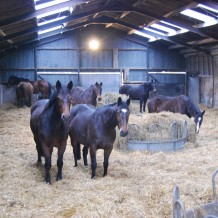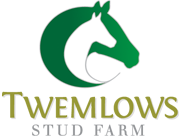Artificial Lighting

As of the 5th December, part of the recipient herd here at Twemlows were placed under lights this is to encourage them to come into season earlier than their natural cycle.
Breeders wishing for an early foal in 2013 can also do a little extra preparation to be ready for the stud season.
A mares reproductive activity is seasonally dependant; the natural breeding season lasts from early spring until late summer. Ovulation in a mare over winter is minimal or absent and over the summer period is at it’s optimum. Over the spring and autumn period the oestrus cycle can become irregular this is considered to be the transitional period.
Horses are known as “long-day breeders” this means that their normal cyclic activity is primarily activated by an increase in the length of daylight in early spring and secondly by an increase in temperature and a higher dietary profile.
Artificial lighting is used to advance the onset of the breeding season, and this is still the most reliable way.
Artificial light is added at the end of the day to provide a total of 14-16 hours of light daily, this results in your mare cycling 60 to 75 days later. If you are wishing to start breeding with your mare in early February it is recommended that you start your light regime around early December.
The lighting in the stable must be bright enough to read a newspaper easily in every corner. Good stable lighting should be sufficent.






